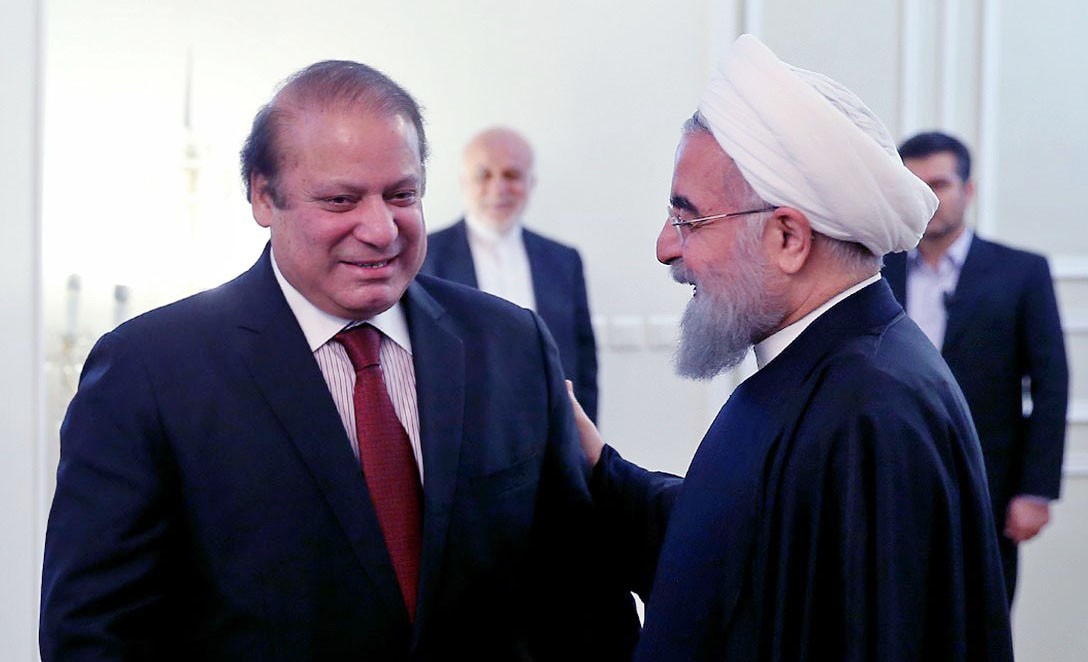
A mutually dependent Pakistan-Iran region is the guarantee of a peaceful and prosperous neighbourhood

Pakistan-Iran regional connectivity through business and trade is important. From neoliberal perspective, business relations are a prelude to both peace and economic prosperity.
This is not to suggest that there is any conflict between Pakistan and Iran but to highlight the fact that relations between the two neighbours have not been congenial either. The construction of the about 40-kilometre concrete wall by Iran in 2006 on Pakistan-Iran border, the Iranian government’s charge of alleged intrusion from Sunni militants and smugglers from our side of the border, and the sporadic firing of Iranian rockets into Pakistani territory are all indicators of never-too-friendly relations. More, an especial case is Pakistan’s consulate in Zahidan.
A 120-year-old building, a hangover from the British, the consulate in Zahidan is allegedly on a disputed land between Pakistan and Iran. During a visit to the consulate, I observed that it does not even have a concrete boundary wall, exposed to any untoward incident. The mud building has deep cracks inside rooms, vulnerable to collapse in the event of any earthquake. "We cannot carry out any construction or renovation work as the Iranian authorities do not permit us. All our appeals for taking the issue seriously have fallen on deaf ears," lamented a staffer.
After the partial lifting of sanctions against Iran and Hassan Rouhani’s visit to Pakistan, aiming at furthering economic relations, Islamabad and Tehran have the opportunity to let trade relations dominate politics and not vice versa. In case of Pakistan, Iran’s rice demand, which is more than 1 million tonnes annually, is a case in point. But Pakistani rice, which some traders in Zahidan believed was better in quality than Indian rice, cannot compete with rice from India. For example, in 2014/15, India exported more than 0.9 million tonnes of rice to Iran. There were two main reasons as to why Pakistan could not benefit from trade with Iran at par with India. One is the transfer of money through hawala system rather than the regular banking system. "The hawala system owners charge high commission on transaction," stated a Pakistani trader in Zahidan. "They charge us many folds more than the normal banking system if one would have been in place," he lamented. "There is absolutely no bank-to-bank transaction between Pakistan and Iran," he added.
Another Pakistani trader, who moves between Lahore and Zahidan, said that Pakistani rice had a huge demand in Iran but could not compete with Indian rice "due to payment through hawala -- the cost of Pakistani rice goes up leaving Indian rice cheaper for buyers."
Secondly, the Iranian government prefers trade with India over Pakistani "because India is the second largest buyer of Iranian oil," stated another Pakistani trader. True, Iranian banks -- Pasargan Bank and Parsian Bank of Iran -- have oil-related accounts in United Commercial Bank Kolkata. Indian rupee-denominated trade with Iran helps both Delhi and Tehran to mutually benefit from trade while easily bypassing the ban over the use of dollar in any Iran-related transaction. Since July 2011, India paid Iran its dues under the head of oil imports by sending 55 per cent of it in euro channeled through Halkbank Ankara and remitting 45 per cent in rupees to Iranian banks accounts in UCB until February 6, 2015 when transaction in euro through Ankara was stopped.
Of course, it is the American pressure that is the biggest impediment in Islamabad’s way to meaningfully engage in trade with Tehran. In wake of unwinding of sanctions against Iran, though the pressure is petering out, it is not going to completely disappear any time soon. As a matter of fact, mostly EU sanctions against Iran have been removed. Only US’s secondary sanctions were discarded. What these measures suggest is that while non-American individuals and companies can do business with Iran, American individuals and companies are still largely barred from doing business with the country. Even the American dollar, in which 85 per cent of global transaction takes place, cannot be used in any Iran related transaction.
What is significant is that the partial lifting of sanctions over Iran has its utility for Pakistan too. The central government’s unwinding of its own sanctions against Iran is a step in the right direction. Similarly, the government’s asking of state bank to draw a mechanism without involving the use of dollars so that Pakistan can enter Iranian market without bothering about American currency and the recent unveiling of midterm strategic trade policy framework with a focus on boosting export and increasing Pakistan’s share of regional trade speak of sheer pragmatism. What our central government needs to do is to take cue from India by dealing with Iran in euro and allowing Iranian banks to open accounts within Pakistani banks so as to do business in Pakistani rupee. Iran can be a great help in ending our energy woes. Tehran is world’s fourth largest oil producer and is home to world’s second-largest proven reserves of gas.
Speaking on the condition of anonymity, a senior government official, who has remained privy to Pakistan-Iran government-to-government meetings said, "On various occasions, Iran has offered 1000 megawatts of electricity on cheap rates to Balochistan. It will not take more than three months to add the electricity to national grid provided that the idea materialises." Already, Taftan town and the contiguous areas with the Iran border are benefiting from 24-hour electricity supplied by Iran since 2007. A mutually dependent Pakistan-Iran region is the guarantee of a peaceful and prosperous neighbourhood.